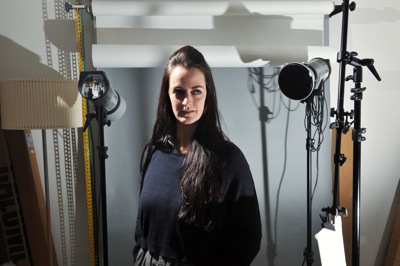
The tenth edition of Derby’s FORMAT International Photography Festival is approaching and we had a chat with its creator and artistic director, Louise Clements, to know more about what to expect from the incredibly rich programme of FORMAT 2015.

Michael Walter/Troika Photos
FORMAT Festival
Alessandra Cianetti: Since 2004, FORMAT International Photography Festival has brought the discussion about contemporary photography to the city of Derby. It attracted about 100,000 visitors two years ago. How has the city responded to this massive interest in contemporary photography? Does the festival engage directly with local communities and Derby-based artists?
Louise Clements: I set up the festival in 2004 but before then, there was a photo festival which ran until 1997, so in the city there is a history of photography with festival legacy. I didn’t come into the city until 2001 so I hadn’t been to the previous festival but I knew about the history, so in terms of culture and photography practice there is a strong element in the city’s DNA. The University of Derby itself was the place to go to study creative photography outside of London, and also in the early days of the nineteenth century in Derby there was a real movement of photography practice and development, and one of the original photo studios from 1867 W. W. Winters still works in Derby today and it is featured in the festival this year.
Some of the ways that we focus the programme is by looking at who are the innovators, so one of the ways to describe FORMAT is: What photography is and can be. We invest time into supporting and developing practitioners in order to feed into the ecology of the scene. We wanted to be a vital festival so that it actually has meaning in terms of photographers living and working today.
We do show some archive exhibitions as well and existing work but our focus is a lot to do with supporting and bringing people together to network and make new connections, and to support that through the dialogues, the workshops, the portfolio reviews, and the conferences, so that within these places we mediate relationships. We work with people a lot.
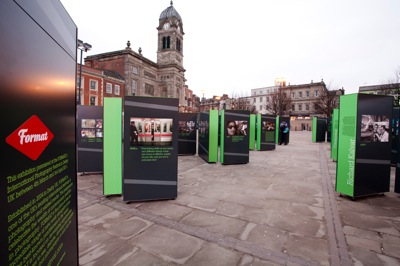
Michael Walter/Troika Photos
FORMAT Festival
I’m the Artistic Director of QUAD and FORMAT. QUAD is the centre of contemporary art and has a programme that runs all year round. FORMAT is every two years and happens in March and April, and we also take FORMAT on the road travelling internationally to South Korea, China, Hong Kong and across Europe. We also experiment with new technologies and online global platforms through mass participation.
Derby is a medium-sized city in the centre of the UK so it doesn’t have same audience that a capital would have; it is a very different place so we can’t assume that by just putting on an exhibition people would come, so, what we do need to do is develop audiences year round and for generations.
As the world becomes more homogeneous, it is very fascinating to actually find and celebrate differences, especially in Europe, and Derby is very interesting. Once you scratch the surface there is a lot going on, so one of the things we do is to involve local producers in order to involve tradition and wrap it into the festival to make the whole experience of visiting a festival more than looking at photographs; it is about life in the world around us.
When you come to FORMAT you can sample things such as Derbyshire Piclets (a special crumpet made daily in the main market) and also try out one of over 120 real ale pubs and local microbreweries, Derby was identified in the latest edition of the Lonely Planet Guide as the ‘Best place to drink real ale in the world’. The Derbyshire countryside is also beautiful.
AC: ‘While a painting or a prose description can never be other than a narrowly selective interpretation, a photograph can be treated as a narrowly selective transparency. But despite the presumption of veracity that gives all photographs authority, interest, seductiveness, the work that photographers do is no generic exception to the usually shady commerce between art and truth. […] photographs are as much an interpretation of the world as paintings and drawings are.’ In 2015 FORMAT has is focus on ‘Evidence’. How would your respond today to what Susan Sontag said in the 1970s, given the developments within the medium of photography and its role in everyday life that have occurred since then?
LC: Evidence, I believe, is a very poignant and relevant theme for now, at any point it will probably be relevant but especially now when, to win the war, you have to win the war of images. Photographs have been used and misused as evidence in incredible ways since the invention of the medium. Especially recently, let’s consider the Internet and the recent events in Gaza, Ukraine and Russia, Africa and so on. In how we understand photography, it still has the legacy of our trust in the images and their truthfulness; although we have practice understanding that they are easy to manipulate, we have still this hangover of trust.
One of the key projects that we have in the festival is ‘Evidence’ by Larry Sultan and Mike Mandel, and that was created in the 1970s as well, around the same time that Susan was writing her thoughts. Apart from the obvious things such as our trust in the image, the use and misuse of photographic documents by power politics during war and through journalism and even popular culture, we are fascinated by the ways that images are used as propaganda, documentary or indexical references. But alongside this as our society is changing there is something very interesting in the way that images are used today as a way of speaking, through Snapchat, Whatsapp, Facebook, recently I read an article about how young people are going back to text message now, because it is a less public space for sharing.
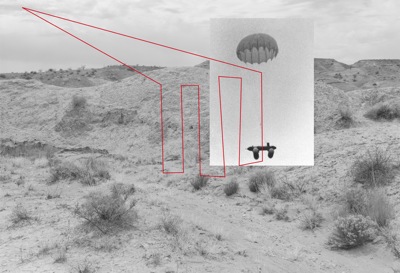
Whiplash Transition/Lisa Barnard/Courtesy of FORMAT Festival
The psychology of how images are used as a way of communicating by so many people is very interesting, with photography being a key way of evidencing a moment in our lives and a way to authenticate or prove our existence. We’re seeing new kinds of psychological and societal issues emerging in which the use of photography is complicit, the obsession with body image, the selfie and cyber bullying or trolling. It is a new territory alongside artists’ and photographers’ projects: it is important to understand and respond to what happening in the wider world around us and it is very fascinating.
In the festival we interrogate this territory through a conferences on the 10th April and seminars including a one day event on the 21 March, which will look at photojournalism, war and the media led by photographers, artists, writers and leading picture editors from the Observer and Guardian.
To respond to where the themes come from, I research and select them myself. Although it takes a long time and a lot of discussions to decide, for the festival I have a steering group which includes key partners such as the University of Derby, as well as a modest festival team and advisors in many different countries. I’m very fortunate that I visit or contribute to several festivals every month so I can see what is happening in the scene, to be aware of themes that have already been explored. Evidence is a theme that has been in my mind for a long, long time.
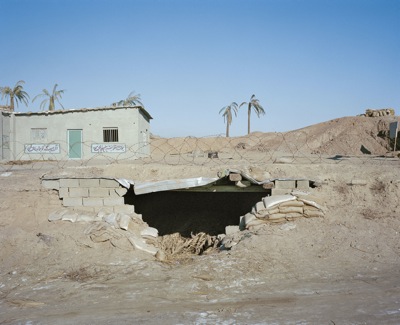
Sacred Defense/Wawrzyniec Kolbusz/Courtesy of FORMAT Festival
AC: In the Festival’s description we can read that FORMAT is ‘concerned with what is happening right here, right now in the scene and beyond’. What, in your opinion, is happening right here and right now in the photography scene? What artists are being featuring as an example of that?
LC: That’s a good question. Just at the start of this year I was part of a conference called ‘The State of Photography’, organised by GRAIN where we were debating what is happening in photography right now. At this particular time, I think it is quite hard to define, but one question that came up was why do we need photography festivals? One reason that was discussed was that they are great because they contain a volume of works so that you can develop a multidimensional perspective of what is going on today. One key way I learn about what is going on alongside giving lectures and meeting photography students around the world, is through the FORMAT open call – EXPOSURE, which is how we open ourselves out to find new voices and talents. This year we have 76 brilliant artist/photographers’ projects that we selected from over 1000 submissions, they represent a broad survey, it was fascinating to see how everyone responded to the theme ‘Evidence’ from multiple perspectives.
One thing we do look for with the festival is innovative ways of presenting works; we discuss with photographers that are working with us if relevant to consider to break outside the rectangular frame toward a more installational or film-based work, or to be site-specific or to explore the online space. We have a new online platform that we developed and that will be launched during the festival: it is a storytelling site that has layers of text, image and sound, and that will be a different way of presenting works. It is screen based but it can be navigated in fluid, intuitive and creative ways. Going back to the mass participation projects, we are also working with The Mobile Photography Network https://mobilephotonetwork.com/ and Instagram to respond to the theme of evidence, the strongest images will be curated as an exhibition alongside an interactive space exploring the phenomenon of the ‘selfie’ and also how images become distributed through the ‘like’, there will be several interactive sites to promote participation.
There will be one other project that is around picturing the past that is called ‘Past Lives’: it is a digitisation project that is looking at films and celluloid both together. We also have projects that look into dance, spoken words: for example we have a writer in residence called Shane Solanki who is a talented performer, poet, and writer who will document the festival and images through words. We like to collaborate across media, FORMAT is about making space for it and, in the future, we are going to work with dance, theatre and music, to support more new commissions for 2017.
AC: FORMAT is a photography biennial appointment that carries on its activities also during the year. Lately the Internet has been occupied – among more serious matters – with new contemporary art buzzwords. Among them, Biennihilism, which The Art Newspaper defines as ‘the feeling experienced by art lovers after yet another phoned-in, theory-laden “ennial”, sending them into a funk of despair and prompting a belief that human life has no intrinsic value or meaning’. In what do you think FORMAT ‘ennial’ is different?
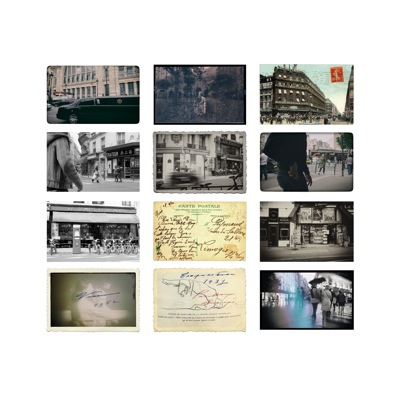
Postcards from a Life/Martina Cleary/Courtesy of FORMAT Festival
LC: I get Biennial fatigue myself – I understand, but I think we are not just presenting to people expecting them to come in isolated ways of seeing and observe the works. We mediate, we create situations; we ask What is the festival? FORMAT is a biennale and a festival as well, we intend for people to enjoy the programmes, meet and have a memorable time through photography.
AC: FORMAT International Photography Festival starts on 13th March and will run until 12th April with a series of exhibitions, commissions, talks, performances, and photo markets. What do you think our readers should not miss?
LC: I think don’t miss the opening on the 12th March and the launch weekend from 13 to 15 March: there will be a lot of things going on. During the opening weekend there will be amazing talks, we’ll have Mike Mandel speaking, W M Hunt will be giving a talk as well and a whole range of special guests will give talks on Friday 13 and Saturday 14 March and Sunday 15 March.
All the openings are on 12 March in our 20 venues and there is also a fringe that is coming together now, so there will be additional things to see in the city. Also one very interesting experiment we’re producing is an app where we invite people to become detectives in the festival, playing on the evidence theme, creating a festival game that incentivises you to look into the images to look for clues; that is a fun way to experiment with looking both for adults and children.
The exhibition in QUAD, curated together with Lars Willumeit, is ‘Beyond Evidence : an incomplete narratology of photographic truths’ there are more than twenty artists in the show and it is definitely something not to miss. Another show that will be a huge one is at the University of Derby and there will be again more than twenty artists.
We are offering 10 free places through Ideastap for the portfolio review that will have awards and it is also the biggest portfolio review in the UK, where we’ll have international editors, photo directors, curators and artists coming.
Moreover we have publications. Photobook is a big part, going back to the Zeitgeist question, and is going to be a relevant feature of the festival. We have a photobook market that will be over the opening weekend and we’ll also have photobook exhibitions; we are showing the Kassell Photobook Award dummies and we’ll be exhibiting 50 photobooks from China curated by Yining He.
The programme this year is extremely diverse and continues until the 12th April, the best way to keep up is to join the mailing list to receive all updates as the programme comes online: www.formatfestival.com

Leave a Reply